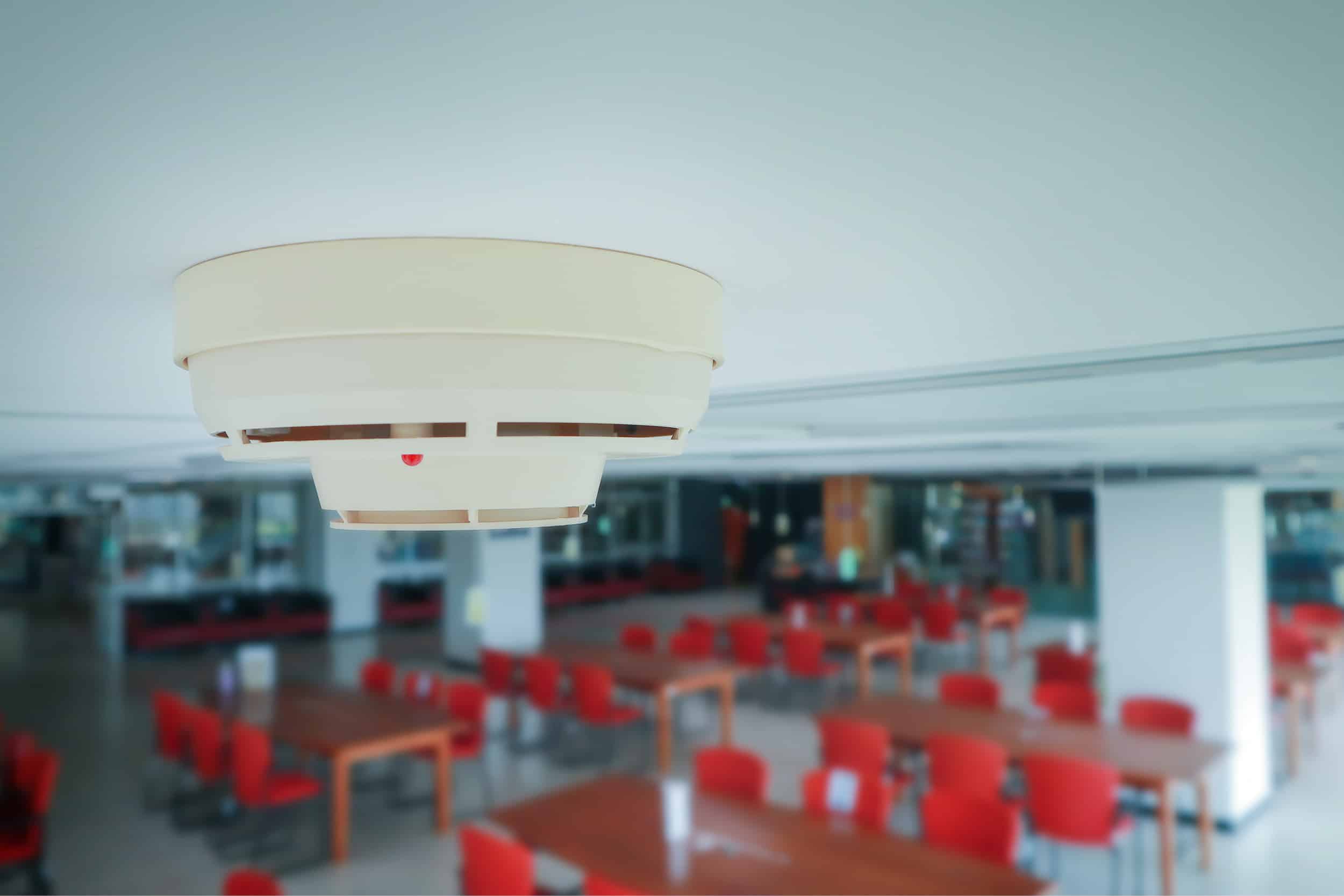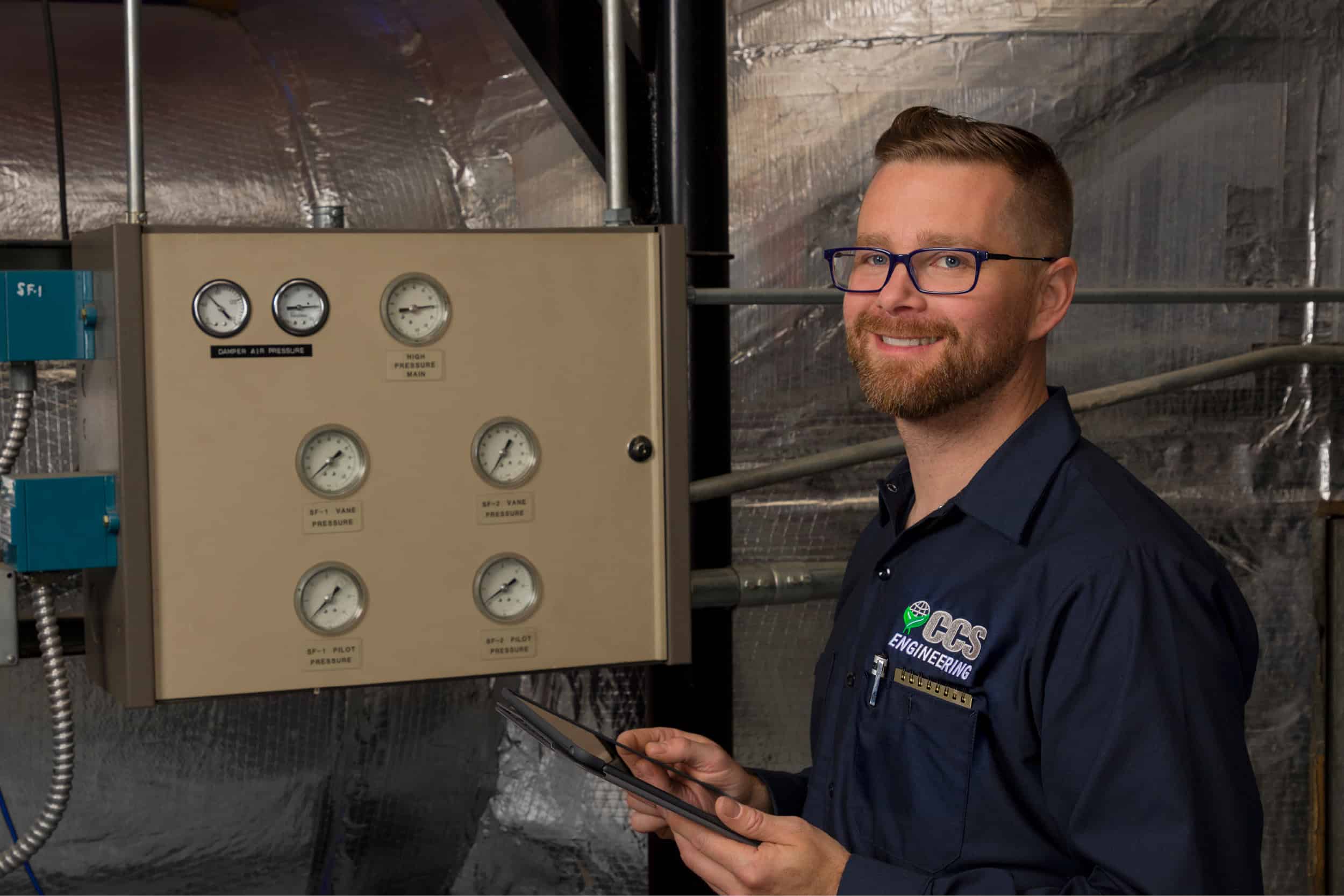As businesses continue to adjust to conditions post-pandemic, employees are increasingly returning, at least part-time, to in-person workplaces. With a newfound awareness of infectious disease transmission, facility managers and operations teams must remain acutely aware of, and mitigate hindrances to, indoor air quality (IAQ).
The impact of indoor air quality – especially poor IAQ — on a facility and the occupants within can be measured in several ways. Industry authorities, such as the National Institute for Occupational Safety and Health, have collected detailed guidance for building management to utilize in monitoring air quality. The following suggested best practices will allow facility operators to deliver confidence in the air people breathe as building occupants continue to return.

Identifying Sources of Air Contamination
There are several metrics to assess when determining the IAQ within a building. This includes carbon monoxide, humidity, and radon, among others. Measuring these elements of air quality composition requires a variety of technologies, though some conditions can be felt without sensory equipment (such as humidity).
Identifying contributors to poor IAQ then helps in deducing what substances could be present within or nearby a facility that need to be mitigated. For example, if a high volume of carbon monoxide (CO) is detected within an office building, there is a likelihood that CO-producing items such as space heaters, water heaters, portable generators, and nearby running cars are likely culprits. Management can then instruct engineering teams to respond to malfunctions in machinery or install ventilation improvements. Some more common items that can impact IAQ include printers and fax machines, opened chemical cleaning products, and exposed food waste. Printers and fax machines, as staples of the office environment, may be harder to remove from a space, but the impact of the latter two items can be mitigated by improving chemical storage and removing food waste promptly.
Human Impact
Poor IAQ has been found to have both short term and long-lasting effects on those exposed to it depending on the form of contamination concentrated within the building. Specifically, when a facility’s airflow hosts a large volume of volatile organic compounds (VOCs) with lack of ventilation, a condition known as Sick Building Syndrome can occur. Also known as SBS, this condition can cause adverse health effects in building occupants until they exit the facility. Some people may develop lifelong asthma as a result of prolonged exposure to SBS, which you can read more about on our blog post Identifying and Mitigating “Sick Building Syndrome”.

Even with proper ventilation, IAQ can still cause other poor health conditions, ranging from cold or flu-like symptoms to the development of respiratory diseases. In addition, poor IAQ often means an increase in airborne germ exposure.
The EPA (United States Environmental Protection Agency) provides guidance on indoor air pollution and health. Studies also have shown a correlation between poor air quality and academic success in schools, which CCS discussed in our blog post The Impact of Clean Schools on Student Success and Teacher Retention. The myriad of health concerns produced by poor IAQ can directly impact personnel productivity and potentially a business’ success.
How To Respond
Not all contributors to poor IAQ are easy to find. Recurrent maintenance on items such as pipes and ceiling tiles will deter mold from forming in otherwise unmonitored spaces. HVAC equipment benefits from consistent filter changes and operational checks. This type of equipment is specifically made for capturing harmful particles and removing them from building airflow. Facility engineers play an integral role in this form of air quality mitigation, which CCS Facility Services details on our blog Engineers: Pillars of Facility Operations.
Be sure to communicate with your building occupants and staff all the steps management is taking to maintain a clean work environment, both in offices and shared spaces, as well as delivering clean air quality building wide. Workers are concerned for their health, but facility managers are concerned as well. No one wants an outbreak of any infectious disease, and those populating a facility need to know what steps are being taken to protect people’s health.
We’re All in This Together
Returning to in-person workplaces is a transition that varies by company, but facility managers can make that process smoother by providing a consistent, exemplary clean and careful dedication to protecting air quality. Demonstrating how your building’s engineering as well as janitorial teams are employing strategies to protect health is essential to restoring confidence in a building’s safety. CCS Facility Services has invested in professional education from the global biorisk leader to deliver exceptional disease prevention and mitigation strategies. We were the first in the world to receive GBAC STAR Service™ accreditation from the Global Biorisk Advisory Council, showcasing our dedication to continuous growth and innovation in our cleaning process, and we would be honored to assist your facility in welcoming tenants and employees back to a safe, clean space.

